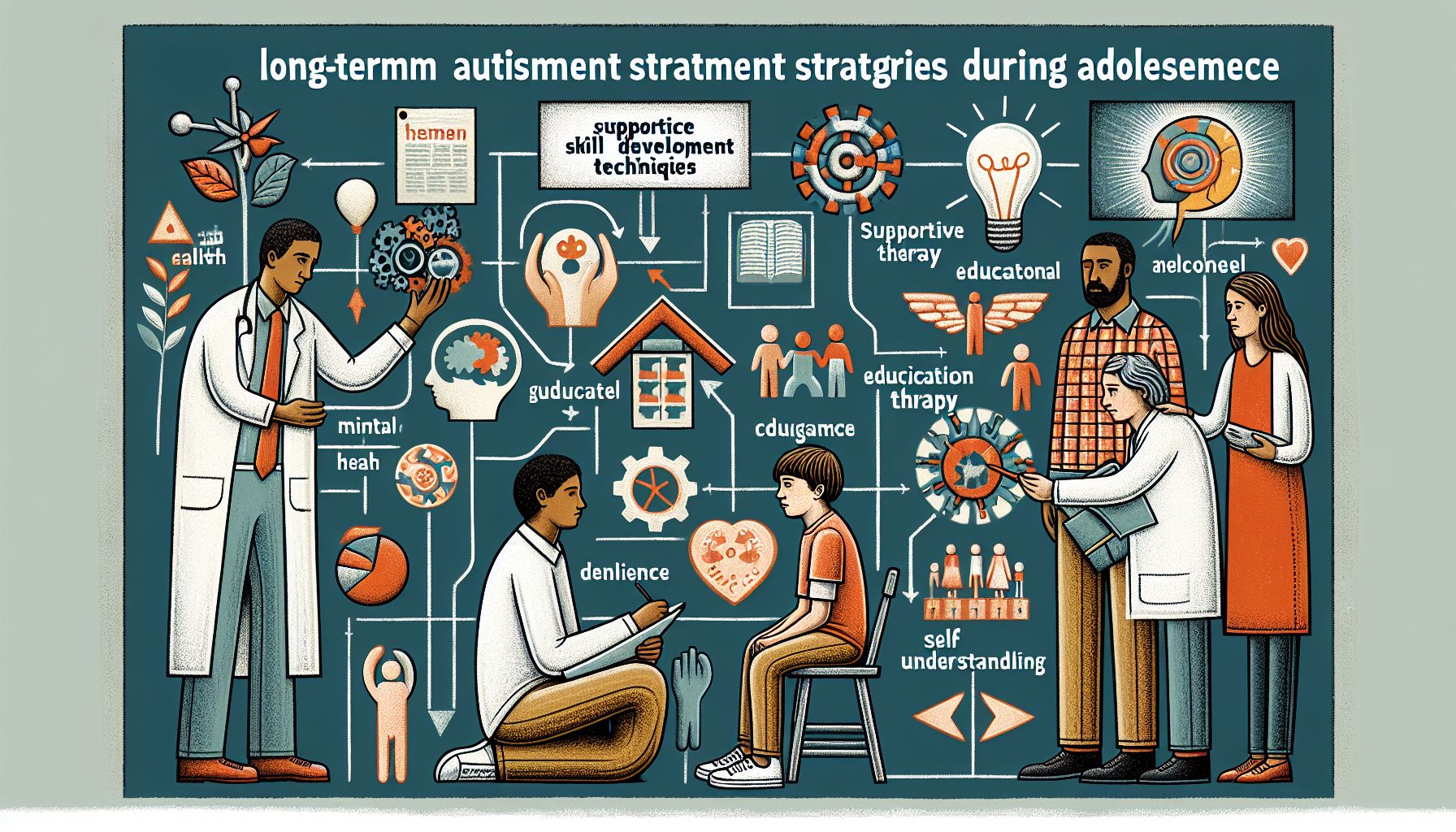Research shows that approximately 1 in 54 children in the U.S. is diagnosed with autism spectrum disorder (ASD) by age 8. Adolescence is a crucial period in the life of these individuals, featuring significant physical, psychological, and social changes. Achieving positive outcomes can be challenging, especially when concomitant mental health issues are also present. With an understanding approach and the correct treatment strategies, young adults with ASD can lead fulfilling lives. This blog post explores comprehensive treatment options and support strategies for managing autism during adolescence.
Understanding Autism in Adolescence
Autism spectrum disorder in adolescence can present complex challenges as children transition into adulthood. Biological changes in puberty can exacerbate some ASD symptoms while introducing entirely new ones. Behavioural problems can escalate, while social and emotional issues can become more prevalent. Further, the adolescent with autism may struggle to understand these changes or to communicate their feelings effectively, contributing to increased anxiety, depression, or aggression.
But there’s hope. With proper treatments and interventions, the adolescent years can become a period of significant growth and development for those with ASD.
Comprehensive Autism Treatment Methods
Various autism treatment strategies exist tailored to the unique needs and abilities of adolescents within the autism spectrum. These treatments range from behaviour interventions, medication management, educational support, and vocational training.
Behavioural Interventions
Therapeutic approaches focus on modifying or managing challenging behaviors while improving communication, social, and academic skills.
Applied Behavioural Analysis (ABA)
ABA programs utilize positive reinforcement techniques to encourage desired behaviours or to discourage unwanted ones. ABA is a robust tool to develop useful life skills, reduce repetitive behaviors, and increase independence. Adolescents with ASD may also benefit from – Pivotal Response Treatment (PRT), which motivates the youth to initiate communication, and Cognitive Behavioural Therapy (CBT), which assists those struggling with anxiety or depression.
Medication Management
While medication should never stand alone as a treatment, it can often be a useful tool combined with other therapies. Clinicians can prescribe medication for symptoms associated with ASD, such as hyperactivity, impulsivity, irritability, anxiety, and depression.
Educational Support
A tailored Individualized Education Program (IEP) can provide educational support in a structured environment where the adolescent can thrive. The IEP, developed by a team including the parents, teachers, therapists, and when appropriate, the student themselves, outlines specific goals and instructional methods tailored to the adolescent’s unique way of learning.
Vocational Training
Job skill training is vital in maximizing the adolescent’s independence and potential for employability in adulthood. Programs designed to teach essential skills for the job market, like resume writing and job interview preparation, can play a critical role in an adolescent’s transition to adulthood.
The Role of Family in Autism Treatment
The support system around an adolescent with ASD can greatly affect their progress. Therefore, it’s essential for families to play an active role in the treatment process. Some recommendations for families include attending family therapy sessions, engaging in sibling support groups, and getting involved in parent training programs.
Family Therapy
Family therapy can facilitate better understanding and relationships within the family. Counselors can provide practical strategies to manage challenging behaviours or stressful situations.
Sibling Support Groups
The siblings of adolescents with ASD can find support in groups designed to address their unique needs, offering an opportunity to share experiences and learn coping strategies.
Parent Training Programs
Participation in parent training programs empowers caregivers with the knowledge to support their adolescents. Access to these tools can be an invaluable asset in managing autism in adolescence.
Conclusion
Without doubt, navigating the challenges of autism during adolescence can be complex, but adopting comprehensive treatment plans can significantly improve the journey. While these strategies need to be individualized to each adolescent, the golden thread running through these interventions is the importance of personalized support and care, in every aspect, from behaviour management to family involvement.
Remember, every adolescent with autism is unique and will progress at their own pace. This does not measure their worth, nor does it determine their future success. As long as they are surrounded by understanding and support, there’s no limit to what they can achieve.

